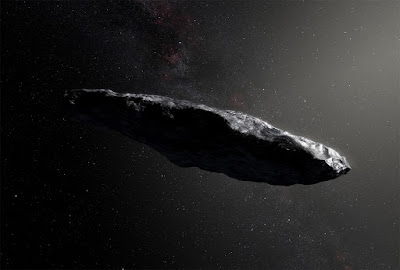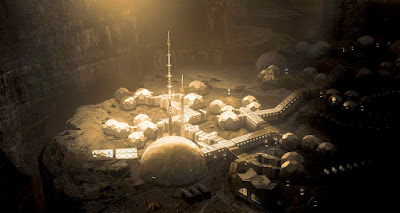We are on the verge of rendering our planet uninhabitable, unless drastic action is taken.
Scientists have recently announced, quite alarmingly, that climate change on our planet could soon reach its tipping point. We are only decades away from that moment. It will happen within a generation.
Lowering our carbon dioxide emissions is no longer enough. Carbon dioxide needs to be extracted from the atmosphere. And we need to start doing that now on a large scale. Otherwise, global warming will enter an unstoppable feedback stage, where warming triggers more warming, which triggers even more warming. Such feedbacks include the release of methane due to the thawing of permafrost, loss of snow cover, the melting of Arctic ice, warming seas, and the loss of forests. All of those will reduce our planet's ability to reflect heat and absorb carbon. The number and intensity of forest fires will increase dramatically, releasing huge amounts of greenhouse gases into the atmosphere. This will only magnify the feedback effect even more.
 |
| Global warming will result in an increase in the frequency and ferocity of forest fires. Such fires add vast amounts of greenhouse gases to the atmosphere. |
The end result of such warming is not clear, but at best it will significantly limit the areas of the Earth where humans can comfortably survive. At worst it will render the whole planet uninhabitable, water will boil away, and the Earth will suffer the same fate as Venus,
Even the 'best case' scenario will cause massive migrations, and subsequently major wars over dwindling food, water and energy resources. Such wars will only add to the warming feedback. As the desperation of governments increases those with nuclear weapons at their dosposal will eventually use them. Countries such as Israel, India, Pakistan and Iran - all nuclear powers and all located in what will become some of the worst affected regions - will feel compelled to use such weapons as countries to their north attempt to stop the migration of their populations. This will cause tremendous damage to the environment, and render even more areas uninhabitable. And there would be a very high chance that a limited nuclear war would escalate rapidly into a global nuclear conflict.
At that point our current technological civilisation will end, and with it humanity's chances of spreading beyond the Earth to become an interplanetary, and then an interstellar, civilisation. Our ability to preserve our species will have slipped away.
Such a dramatic warming of the atmosphere will cause a rapid rise in sea level, raising it to well over a hundred metres higher than it is at present. In addition to the billions who had already perished in the wars of the previous decades, hundreds of millions more will die. Survivors, who will eventually number just a few tens of million at best, will struggle to live in the few remaining higher altitude lands. Their existence will be basic and medieval. It will be a return to the dark ages. Thousands of years of progress and knowledge will have been lost.
Only then, with the destructive output of our current civilisation at an end, can the climate of Earth have a chance to stabilise. The ice caps will reform and the sea level will reduce. After many centuries flora and fauna will start to recover. Only at that point, humans, if they are not extinct, will have another chance at building a technologically advanced civilisation.
It's unlikely that we can prevent a climate change disaster on our planet, but we can improve on the 'best case' scenario if we start doing three things right now:
1. Preserve Knowledge of our Discoveries and Inventions
We must help survivors in the post-climate change world avoid repeating our calamitous mistakes, and allow them to 'fast-track' through what has taken our current civilisation thousands of years to learn, discover and invent.A comprehensive record of our achievements (and of our destructive actions, so that mistakes are not repeated), must be preserved in a way that they can understand, and in a way that will last for thousands, even millions, of years. We must investigate how we can provide such knowledge to our distant descendants, and then store it in multiple safe yet easily accessible locations, including locations elsewhere in the Solar-System.
 |
| DNA could be the ideal solution to extremely long term information storage |
Using paper or digital media to preserve knowledge will only be suitable for a few hundred years or so, but such means should be used initially, as our descendants will be able to understand and use these forms of storage.
But a more radical solution is needed for complex and advanced knowledge that will be useful once any new civilisation progresses to a certain level. Storing information in DNA is one such solution. It's been shown that if the DNA can be kept at sub-zero temperatures the information will maintain its integrity almost indefinitely. DNA information stores would be best located away from Earth, perhaps on the Moon in the permanent darkness of one of the polar craters, and deep within some of the planetary bodies of the outer Solar-System.
2. Work to Avoid or Delay the Climate Change Tipping Point
Even to just delay the tipping point we need to start work now. The small steps some of us are currently taking are utterly inadequate.Our civilisation needs to fast track the very widespread use of electric vehicles by banning petrol and diesel engines within a decade. All developed countries need to push this idea hard, and give incentives to developing countries to do the same. And governments need to increase vastly the funding for research into clean energy, and get nuclear fusion working. The generation of electricity by burning coal and oil has to stop on a worldwide scale without delay. Countries like China appear to be increasing the use of fossil fuels for energy generation, which is going to be catastrophic if it is not prevented.
But that alone will not be enough. We need to start undoing the damage we've already done.
Various climate engineering projects should be started immediately. These are possible with current technology. To help reduce global warming solar radiation management needs to be implemented to reduce the sunlight absorbed by the atmosphere. Relatively simple things can be done such as seeding clouds with sea water to brighten them (and therefore reflect more sunlight), and using pale roof colourings and promoting the expansion of polar ice.
 |
| Removing carbon dioxide from the atmosphere using facilities such as this is possible. It can be stored in hard pellets which can be buried deep underground. |
We need to start removing some of the excess greenhouse gases that our activities have pumped into the atmosphere. This can be done directly using machinery that would then store the extracted carbon dioxide deep underground, and indirectly by promoting natural processes, such as extensive tree planting to reverse deforestation, and ocean fertilisation to add nutrients to the upper oceans to increase carbon dioxide absorption.
And the growth of our human population needs to be controlled, especially in developing countries. We can no longer support such large increases, which are generally located in regions that can least support it. It should be stabilised as soon as possible, and allowed to reduce naturally to a more sustainable level.
Doing all of the above is the best chance the Earth has of remaining a viable place for humans to live. But it is likely to only buy us some time - nothing more. We need to establish our civilisation elsewhere to properly secure our future.
3. Secure the Survival of Our Civilisation Independent of Earth
There's a significant possibility that the feedback warming will not stop, and if that is the case the Earth could indeed end up in a state similar to that of Venus.The only way to ensure the continuation of our species beyond that event is to make sure that there are self-sustaining human colonies beyond Earth, on planetary bodies such as the Moon, Mars, and especially on what is looking like the best location: Titan, the largest moon of Saturn.
As well as colonies on planetary bodies there should be very large space habitats constructed throughout the Solar-System that would house tens of thousands. The resources to build such massive facilities can be found in the asteroid belt between Mars and Jupiter.
 |
| We will have to mine asteroids on a large scale to construct the off-world facilities humans will need to live independently from Earth |
Extracting those resources would be relatively easy due to the very low gravity wells of the asteroids. The establishment of mining operations there must be an immediate priority. The space habitats could be constructed in the asteroid belt and then maneuvered into their final positions, either into planetary orbits, or into their own independent orbits around the sun.
In parallel to the development of colonies around the Solar-System there needs to be development of interstellar missions with the goal of establishing human colonies around other stars. More and more exo-planets with the potential for colonisation are being discovered all the time, with one, Proxima Centauri B, only 4.3 light years away.
It would be a mammoth undertaking, and there are incredible engineering challenges to overcome, but investment in the rapid development of the methods and technology required is essential to build such habitats in time. As well as providing immediate funding, it should be the priority of governments to ensure that education systems are geared to maintain a constant supply of highly capable scientists and engineers to make it a success. The long term survival of our species depends on it.
If all three of the above steps - preservation of our knowledge, delaying or avoiding the tipping point, and establishing large self-sustaining human colonies elsewhere in the Solar-System and beyond - are pursued with the resilience, determination and creativity that our species has in abundance, then we will survive.
But we must start now.
Right now.





























